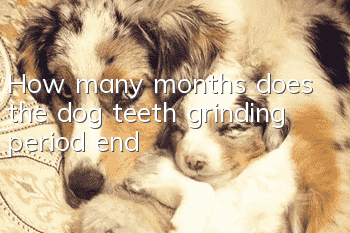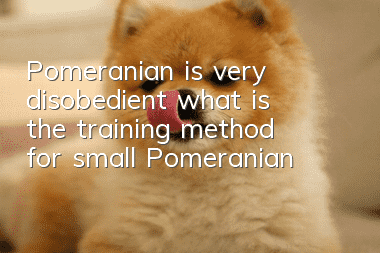How many months does the dog teeth grinding period end?

The teething period for dogs usually ends around 7 months. The molar period generally refers to the period when a puppy's teeth are from deciduous teeth to permanent teeth. If the teeth feel strong itching, the dog will start to chew on things to grind his teeth. Therefore, the molar period and the tooth replacement period are highly overlapped. During this period, the dog needs to be given a toy molar stick or a cow stick bone that is not easy to chew to help the dog grind its teeth. The dog should be controlled not to eat too much soft food to prevent it from being inconvenient for tooth replacement and teeth grinding.
Precautions during the dog molar period:
1. The dog may eat the replaced deciduous teeth
Many times the owner will find that the dog The dog's teeth have all been replaced, but the replacement baby teeth cannot be found. It may be that the dog swallowed the baby tooth. But you don’t have to be nervous, it won’t have any bad effects on your dog’s body.
2. Prepare teething toys
Prepare some chewable items for the dog, such as teething sticks of different shapes and materials, gel toys, etc. Teething sticks not only satisfy your dog’s appetite, but also clean their mouth.
3. Put away dangerous items
Properly put away items that are dangerous for dogs and items that cannot be chewed to prevent damage and damage caused by dogs chewing.
4. Apply ice to the dog
If the dog is very uncomfortable, you can let the dog hold something that can relieve pain and relieve itching, such as ice cubes in summer when the weather is cold. Use an ice towel instead to relieve your dog's pain.
5. More care
Give your dog more care during the teething period and play with your dog more to make your dog happy both physically and mentally.
6. Supplement calcium and snacks
Pay attention to your dog’s diet and supplement your dog with calcium and other nutrients. Chewable snacks and a good diet such as raw meat and bones can also help you fight plaque accumulation. Regularly feed fresh vegetables and fruits rich in vitamins and high fiber. You can also feed your dog various bone chews such as vegetable sticks, which can exercise your dog's teeth. The biting force can also play a role in cleaning tartar and tartar.
7. Observe the growth status of new teeth
When new teeth grow, pay attention to whether they are blocked by old teeth to ensure that the new teeth grow in the correct position. If necessary, you can ask a pet doctor to extract the dog's shaky teeth.
8. Let the dog adapt to tooth brushing
From the age of 6 months, the dog should brush its teeth with pet-specific toothpaste. If the dog’s oral condition is good, it can be brushed every week. 2-3 times, it is best to brush your teeth every day.
- Will a dog's stillbirth be expelled automatically?
- What are the symptoms if a dog has coronavirus?
- Can dogs take human cold medicine if they have a cold?
- How to train a dog to travel with?
- Tips for novices to bathe their dogs
- Tips to help your dog’s ears stand up
- Reasons why dogs attack people
- Why do Corgis have their tails docked?
- What should I do if my Corgi has a skin disease?
- Precautions for Schnauzer pregnancy



